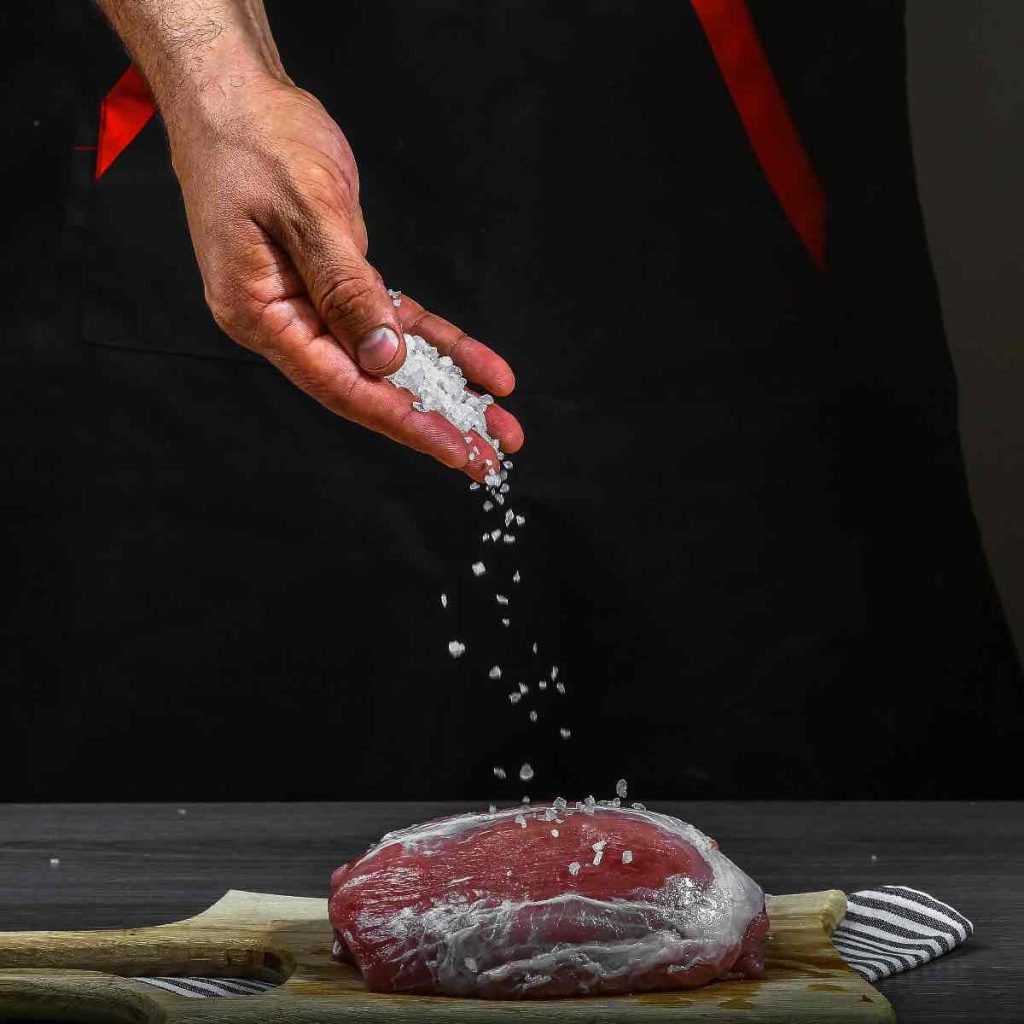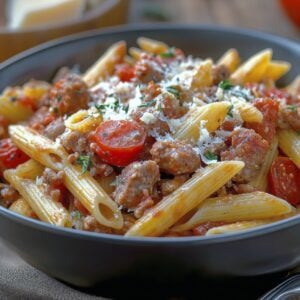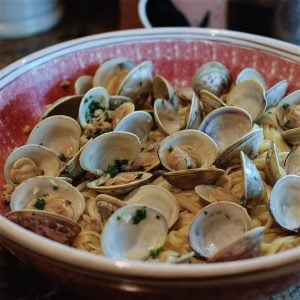How to Season Foods – Common Seasoning Mistakes & How to Avoid Them
Spices and seasonings are our passport to a whole world of flavor possibilities so it is critical home cooks learn how to season foods properly. We are very lucky that we live in a time when a host of spices are readily available for our use and experimentation.
In the past, wars have been fought over spices. Great voyages were funded by royalty to find ways to get to the spice-rich countries of South and Southeast Asia (The “East Indies”).
Why do you think Columbus was bumbling around in the Atlantic Ocean? He was trying to find the Western Route to the “East Indies,” and happened to run into this big old country instead. But that’s another story.
The point is that spices have always been important. The word salary comes from the Latin word for salt, and while the relationship between salt and pay is unclear today, it is true that salt was precious to the Romans.
Somewhere along the line, American housewives’ pantry supply of spices dwindled down to some salt, pepper and maybe some seasoned salt. Since the rekindling of America’s love affair with all things culinary, started by Julia Child back in the 60’s, more and more herbs have begun making an appearance in pantries across the country.
This is an exciting state of affairs, and I have slowly begun experimenting with different herbs, spices and seasoning blends. It can be a little intimidating at first. After all, there are so many spices available, and it can be daunting to find the right ones or combinations of spices to give the flavor profile we’re after.
Part of the problem is that spices can be expensive. As home cooks, we are also somewhat limited by space and occasions to use spices.
For example, it seems a bit silly to buy spices in bulk to save some money if we’ll ever only use a fraction of them. And, if we do buy in bulk, where do we store all that stuff?
So, what’s a home cook to do? This chapter is a good place to start.
We’ll look at the difference between herbs and spices, the right way – and for how long – to store them, the ones to look for and how to use them. But first, let’s look at the difference between herbs and spices.
In a nutshell, herbs come from the leafy parts of plants while spices come from everything else: roots, bark, seeds, fruits, etc.
In general, herbs are green and can be purchased fresh or dried. Spices, again in general, can be almost any other color except green and leafy: brown, yellow, red, russet. Spices can be purchased whole or ground.
That seems like a pretty simplistic definition, but it is a true definition. Besides, isn’t nice to have something about cooking be simple for a change?!
These next few chapters will look at some of the more common mistakes home cooks make when it comes to spices and at the end I’ll offer you a table of spices, their flavor profile, associated cuisines, used in sweet or savory dishes and what they go well with.
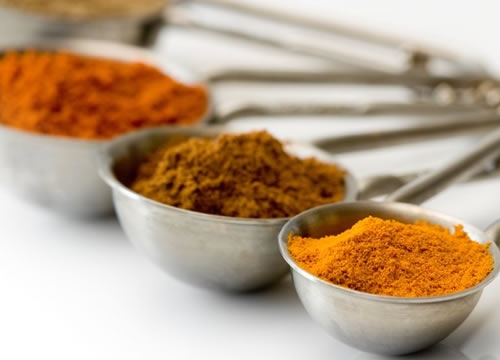
Mistake #1 Storing Herbs and Spices Improperly
Most of us have fallen for the siren song of the beautiful spice rack display. They are very popular wedding shower gifts, so it seems as though we all know that herbs and spices are necessary even if we don’t know how to take care of them.
As a result of having your spices and herbs proudly displayed on your countertop, most of them fade and lose potency very quickly due to exposure to light.
The Fix–Store in a Cool, Dry Place
That sounds like the instructions on most of our vitamins and medicines, doesn’t it?
Well, historically, many spices and herbs have been used for medicinal purposes, so it stands to reason. The advice is sound. Light and heat break down the essential and volatile oils that give dried herbs and spices their characteristic flavors.
Store your spices away from your oven and stove–just a cabinet away will do and keep them in airtight, lightproof containers. If you don’t want to repackage all of your spices and herbs that you bought in glass bottles, just keep them in a dark place.
When you need to use them, take them out, get what you need, and then put the rest away.
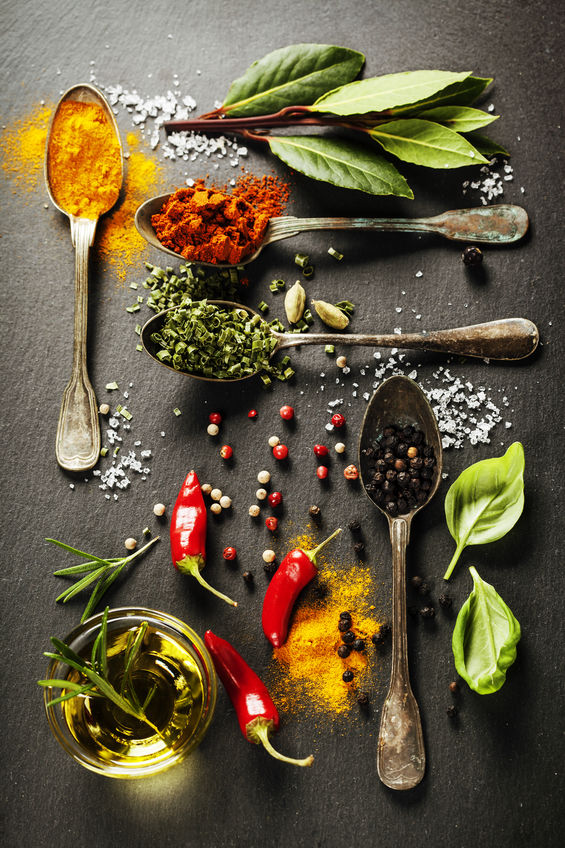
Mistake #2 Keeping Herbs and Spices Forever
Most of us have a dark, dusty corner of our spice cabinet where old spices go to die. You know the place. It’s where you keep the rarified spices that you bought to make a special dish for your first wedding anniversary.
You bought 4 ounces of spice, you used 1/2 teaspoon, and then you put the jar away, never to see the light of day again. Eventually, you gathered quite a collection of one-time used spices that all huddle together, forgotten.
The Fix: Take Inventory; Buy Only What You Need; Replace as Necessary
Your spice cabinet is your doorway to world cuisine. It’s the path to vibrant and tasty foods. Know what you have.
If you do need a special spice for something, do some research and find out what other uses there are for it. Taste your spices when you get them, and plan to use them in as many ways as you can.
If you don’t consider yourself a very adventurous cook yet, buy the smallest amount possible of a spice or herb that you need for a special dish. If you truly cannot find any other uses for your purchase, give it to a foodie buddy so that it won’t languish in the Spice Graveyard.
Dried herbs can be kept for no more than about six months, so you should never buy more than what you can use in that period of time. Before using a dried herb, pour the required amount in your palm and then crush it with the thumb of your other hand. This will help to release the volatile oils and bring out the flavor in the herb.
If you always make sure to do this step, you might be able to squeeze nine months out of dried herbs, but don’t push your luck. If your herbs smell old and faint, they aren’t going to perform well in your dish.
Depending on the spice, dried spices can last from six months to a year. Some spices have better keeping qualities when refrigerated. Make sure that they are well-sealed so no moisture will seep in, and again, use in a timely manner.
There is no use in buying a huge vat of spice at the warehouse store if you’re only going to use a tablespoon every once in awhile. Spices are fairly expensive, so a “bargain” price is really no bargain at all unless you’re going to use it up.
Whole spices, such as nutmeg, allspice, cloves, cumin, cinnamon and cardamom, last much longer than their ground counterparts. Whenever possible, opt for the whole spice and grind it yourself as you need it.
Depending upon the spice, whole spices will last for two or more years, giving you
a) more time to use them up without their losing flavo.
b) more time to learn different ways to use them so you won’t have to give them away to your foodie buddy!
In the case of fresh herbs, moisture is definitely the enemy. When you bring home fresh herbs, rinse them well and then dry them by rolling them loosely in paper towels. You can then store the herbs in the refrigerator loosely rolled in another paper towel or upright in a jar or small vase with about an inch of water in it.
That’s right – treat them like cut flowers. After all, they are cut plants. Make sure that no leaves are submerged in the water, and change the water daily.
When the herbs start looking a bit wilted and are turning yellow, it is a sure sign that they are past their prime, so make sure to use fresh herbs within a week or so of purchasing/harvesting.
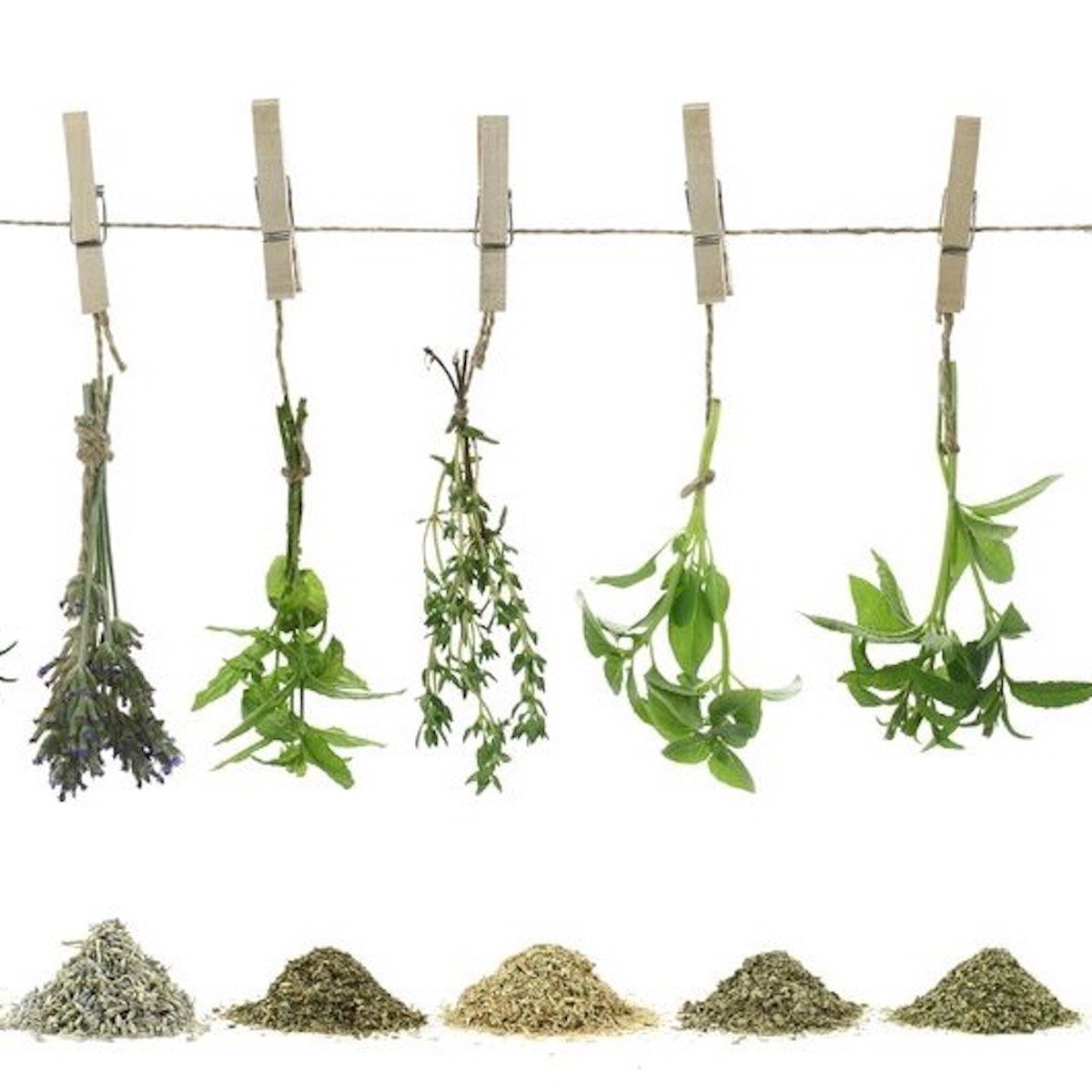
Mistake #3 Making Random Substitutions Between Fresh and Dried Herbs and Spices
Many fresh herbs and spices taste much different than their dried counterparts. It is not such a huge issue with spices, as most are widely used in their dried form.
Most herbs, however, can be found dried or fresh. Knowing which form of the herb to use, and when, can make a huge difference in the flavor of your dish.
The Fix: Know Thy Herbs
Fresh herbs, unsurprisingly, have a fresh “green” taste as part of their flavor profile. When dried, this green taste fades.
Further, since the moisture has all been driven out of the leaves, what is left are the volatile essential oils that lend both their aroma and flavor to the herbs. As a result, the flavors are much more concentrated.
Of course, not all herbs have the same concentration of essential oils, so when dried, their flavor is quite muted.
For example, it is not generally a good idea to use basil or mint in their dried forms because the intense flavors are found more in the water-based moisture in the leaves rather than in oil. When the water evaporates during the drying process, so does much of the flavor.
When using fresh herbs, it is generally best to add them towards the end of the cooking process (or to use them as garnish after cooking) to take full advantage of the “green,” grassy notes.
Use dried herbs towards the beginning of the cooking process to give the leaves plenty of time to re-hydrate and to let the concentrated essential oils disperse throughout the dish.
As far as substituting one form for the other, just know that the flavor profile will be different when subbing fresh for dried, or vice versa. Not that one is better than the other, of course – the flavor of the dish will just be different.
Given that, the prevailing ratio of substitution is one to three. That means that you will need three measures of fresh herbs to equal one measure of dried.
Conversely, for each measure of fresh herb, you’ll need 1/3 that amount of dried. Remember to add the dried herbs towards the beginning of cooking and the fresh right at the end or at the time you’re serving.
Of course, to complicate matters, there are exceptions to the rule. Woody-stemmed, resinous fresh herbs, such as rosemary, thyme, bay and sage can be added at the beginning of cooking as their flavor comes mainly from oils instead of water-based moisture. These herbs can stand up to long cooking as their flavor won’t literally go up in steam.
Another issue in fresh herb usage is in the way you prepare the herbs for cooking. A rough chop will lend a milder overall flavor than a mince since there is much less cell damage to the leaves.
As a rule, the more assertive the flavor of the herb, the less processing you’ll want to do before adding it to the dish.
Rosemary is a very strong-flavored herb, so using it in judicious amounts and in its whole form (whole leaves or small even sprigs) will keep its flavor from overpowering your dish. If, however, you want an intense rosemary flavor – maybe for an infused oil – mincing the leaves will release many more essential oils, resulting in a very bold flavor.
Mistake #4 Muddy Flavors
Just because you own a whole cabinet full of spices does not mean you should use all of them in every dish you make.
When you get overzealous in the application of herbs and spices, the very characteristics that make them so tasty in ones, twos or threes can turn into a jumbled mess if you get carried away. No one flavor is allowed to shine, and then all the flavors suffer because of it.
The Fix–Use Complementary Flavors
This is one of the phases that you sometimes have to go through on the road to becoming a good and confident cook. But, as in decorating and art, sometimes less is more.
There are certain flavors that go well together: parsley and lemon, rosemary and thyme, cinnamon and nutmeg, coriander and cilantro.
There are also classic pairings of foods and spices: lamb and mint or rosemary, tomatoes and basil, cream and nutmeg, poultry and sage. If you stick to these combinations, you really can’t go wrong.
This doesn’t mean, however, that these pairings are set in stone. Do some research about the dish you’re making and then try adding another herb/spice or two to the mix. Just let one be the dominant flavor and let the others play a supporting role.
I know you might not want to get out another measuring spoon, but using one teaspoon of an herb/spice and 1/4 teaspoon of a couple of supporting flavors will give you a much more focused dish than if you had used 1 teaspoon of everything.
Do not think that it is cheating to use a ready-made spice or herb blend. This is almost a foolproof way of balancing the amounts of spice and herb that you add to a dish. I always have curry powders, chili powders and herbal blends such as Italian seasoning or Herbes de Provence on hand to add to dishes or to use as a flavor base.
Study the ingredient lists of these blends; use the Internet to search for a substitute for a particular seasoning blend or to find out what herbs and spices are generally associated with what cuisines. In this way, you will become familiar with the cuisines of different cultures and will be able to evoke those flavors by using certain herbs and spices and not others.
For example, while it makes perfect sense to use cilantro in a Mexican or Indian dish, you wouldn’t use it in a French dish–cilantro is not a part of the palette of flavors available in France.
Above all, remember this: spices and herbs should enhance the main ingredient’s flavor, not hide it.
While it might be true that strong spices were used years ago to mask off-flavors in foods before the age of refrigeration, these days, spices should generally take the role of flavor enhancer, not flavor masker.
How NOT to Cook Topics |
||
| Introduction | Braise | Roast |
| Start a Recipe | Cook Pasta | Saute |
| Season Foods | Grill | Simmer |
| Bake | Pan Roast | Simmer |
| Boil | Poach | Steam |

